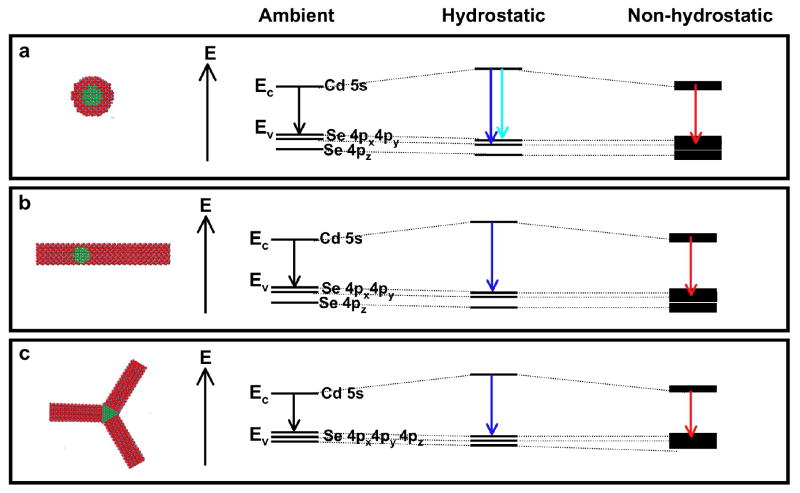Figure 4.
Schematic of proposed photoluminescence transitions for CdSe/CdS nanocrystals under ambient, hydrostatic, and non-hydrostatic pressure. Crystal structures and band diagram schematics for CdSe/CdS a) dots (wz-CdSe core), b) rods (wz-CdSe core), and c) tetrapods (zb-CdSe core) at ambient pressure (left), under hydrostatic pressure (center), and under non-hydrostatic pressure (right). Under hydrostatic pressure, the bonds between all atoms are compressed, resulting in a blue-shift of the energy gap. Dots are sensitive to slight deviations from hydrostaticity, leading to a few observed optical transitions under hydrostatic pressure depending on the orientation of the dot with respect to the small deviatoric stresses. Under non-hydrostatic pressure, deviatoric stresses induce stretching in some bonds, resulting in an energy gap red-shift. Because the particles may be oriented in any direction within the DAC, deviatoric stress results in different crystallographic strain of the particles, broadening the ensemble electronic band structure.

